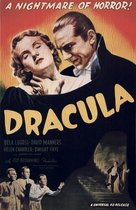Our editor-in-chief Nate Yapp is proud to have contributed to the new book Hidden Horror: A Celebration of 101 Underrated and Overlooked Fright Flicks, edited by Aaron Christensen. Another contributors include Anthony Timpone, B.J. Colangelo, Dave Alexander, Classic-Horror.com's own Robert C. Ring and John W. Bowen. Pick up a copy today from Amazon.com!
Someone's Watching Me! (1978)
John Carpenter’s Someone’s Watching Me is the famed horror director’s personal homage to Alfred Hitchcock’s classic cat-and-mouse thriller Rear Window. Behind the camera, Carpenter’s personal touches are prominent and evident, and the musical score works to help serve the eerie tone. However, Carpenter’s film relies too much on the previous source material and the end result is a film that feels borrowed instead of new.
In Los Angeles — a familiar Carpenter locale — a woman named Leigh (Lauren Hutton) has recently purchased a high-rise apartment with a magnificent view. After getting a job at a television studio as its station director, she receives a strange phone call from an unknown caller. These calls follow her back to her apartment and are accompanied with equally strange gifts left on her doorstep. Several nights a week, the lights flicker. Leigh’s co-worker Sophie (Adrienne Barbeau, The Fog) suggests calling the police, but the stalker hasn’t threatened Leigh. He hasn’t even met her. However, through a telescopic lens from the apartment complex across the street, he watches her.
This simple plot is further complicated when Leigh meets Paul (David Birney, “Murder She Wrote”) at a bar one night and the two develop a relationship. Paul serves little purpose in the film as a whole, and the relationship that he develops with Leigh seems arbitrary and inauthentic; instead of being an important element of the plot, Paul’s role is a convenience to the screenplay, as if Carpenter needed a reason for Leigh to leave the apartment so that the stalker could leave notes to keep the plot moving forward.
Perpetuating the plot even further (with much better results) is what Carpenter does behind the camera. His subtle camera movements — reminiscent of his own Halloween — compliment each scene without being overtly obvious. Carpenter wisely chooses to use his camera as another voyeur, observing the characters from afar. In a scene inside a laundry room hallway, the camera follows distantly behind Leigh as she chases after the man that she believes to be her stalker and she looks back at the camera as if the viewer is the one she is looking for. It is strange at first to hear the classical music that accompanies these scenes on the soundtrack, having become accustomed to Carpenter’s synthesizer, but the use of string instruments is the right choice here. Carpenter’s tense mood compliments his on-edge characters.
Yet even with Carpenter’s nuances, his film can’t shake its Hitchcockian influences, particularly in the film’s most effective scenes. One such scene involves Sophie watching through a telescope lens as Leigh searches her stalker’s apartment for evidence that could lead to his arrest. This scene ultimately leads to another where Leigh struggles with her stalker while hanging precariously from a window. Although these scenes work in creating necessary tension, the fact that these scenes were pulled from Hitchcock’s Rear Window questions their effectiveness here: Are these scenes effective because of their context in Carpenter’s film or because the audience has seen them work before in Hitchcock’s?
This question is left up to the audience to decide. Those that haven’t seen Hitchcock’s familiar will still be familiar with the formula--because it has since been remade and parodied — but might not see Carpenter’s reuse of it as a problem. Having seen Hitchcock’s classic, I find that Carpenter’s version serves its own purpose, but ultimately, the most memorable moments that the film has have already been seen before. Someone’s Watching Me is considered one of “lost” classics of director John Carpenter, who behind the camera adds a certain style and mood that cannot be compared. Unfortunately, the content of the film is reminiscent of another classic, which will be remembered long after Carpenter’s “lost” classic is lost again.








